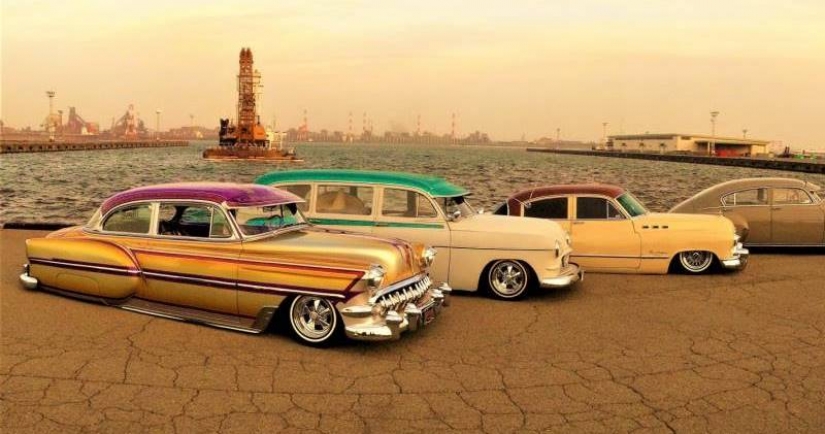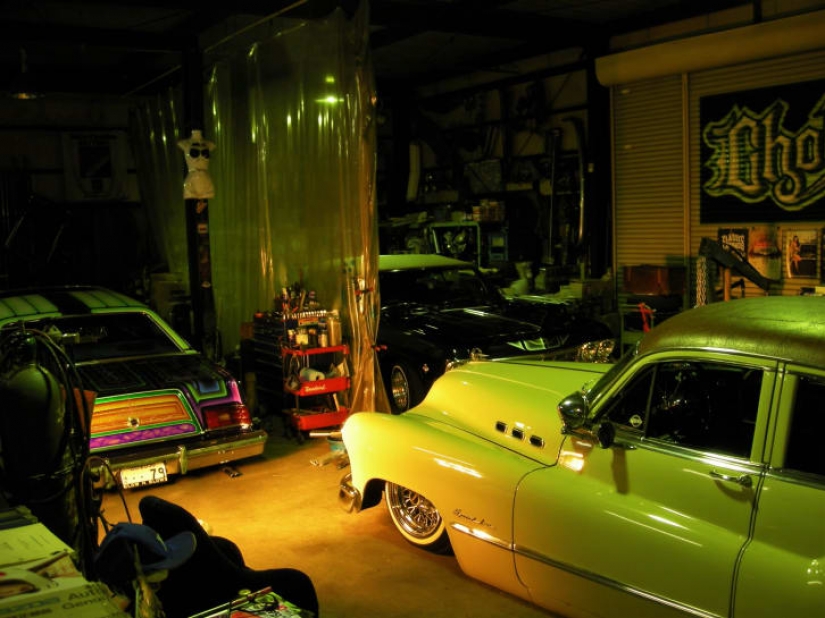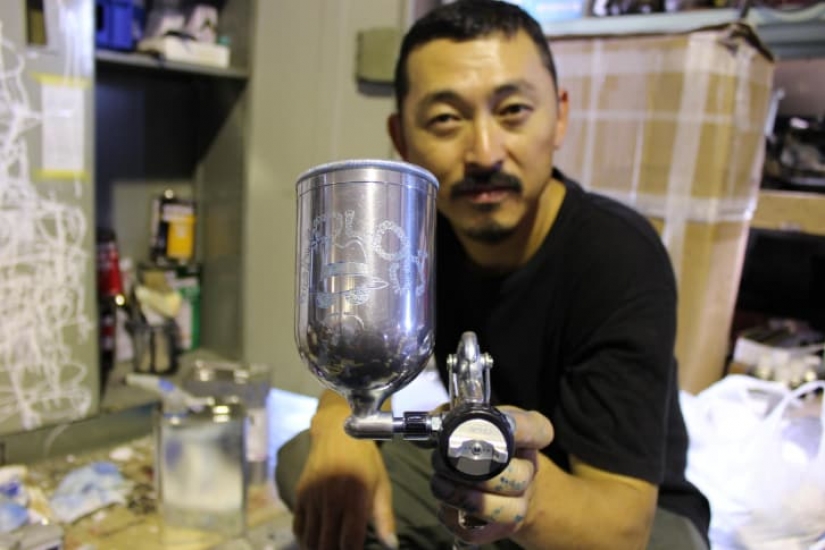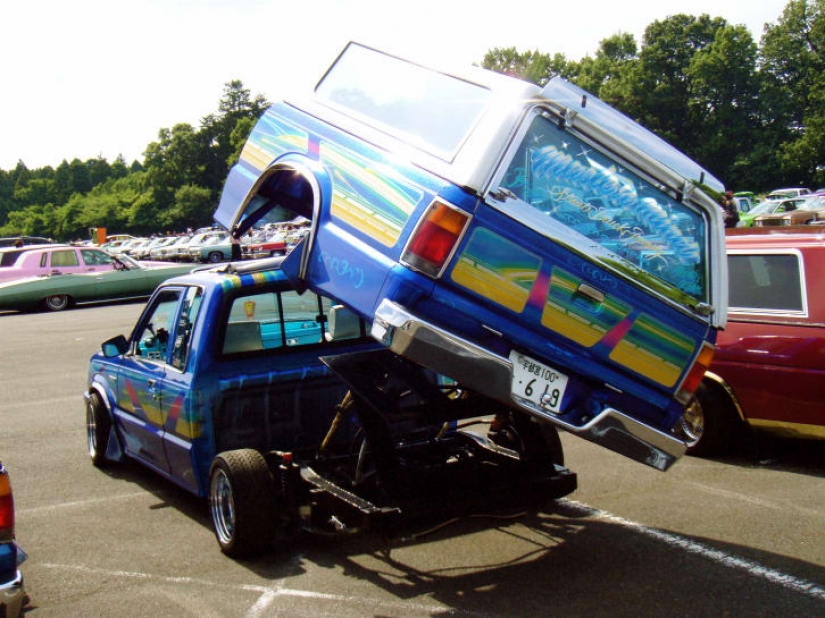"At first we underestimated trucks": the story of the first lowrider club in Japan
Categories: Asia | Auto | Social Networks
By Pictolic https://pictolic.com/article/at-first-we-underestimated-trucks-the-story-of-the-first-lowrider-club-in-japan.htmlThe golden Chevrolet 210, produced in 1954 (the owner calls it "Sphinx"), the creamy green Dodge D5 Sedan of 1936 (aka Eltesoro, which means "Treasure" in Spanish), the bright pink Mercury Monterey of 1954 (La Vida Rosa — "Pink Life") — all these are unique cars whose owners are in the oldest Japanese club "Pharaohs" (Pharaohs). Here for almost 30 years, virtuoso mechanics have been understating and tuning cars so cool that fans of lowriding from all over the world come to learn.

Lowriding originated in Southern California in the 1940s, when Mexicans decorated American cars with bright designs and colors, and also switched cars to the "low and slow"mode. The Lowrider culture expanded slowly in the United States, but two decades after the Second World War, the number of fans of understated cars increased dramatically, and the art of upgrading cars spread beyond America.

In the mid-1980s, at the height of the "bubble" economy (a financial period in Japan characterized by multiple price increases), Japanese motorists began to import models such as the Impala and Ford Mercury, replete with chicano works and hydraulics. Chicano is an artistic style (drawings, sketches, tattoos and later airbrushing) based on Latin American motifs (from the eponymous name of the people in Latin America).


Mr. Ushida owns the same "Sphinx" - a 1954 Chevrolet 210. The man is 46 years old, and he remembers how as a boy he saw amazing American cars on the streets of Nagoya (one of the largest cities in Japan and the unofficial capital of Asian lowriding). At that time, Hisashi Ushida was still in school. Neither he nor his friends had the opportunity to ride around the city in such expensive cars, so the guys came up with an upgrade of wrecked trucks (which, as they say, they had enough money for, and bought it).
Below we will give some automotive masterpieces that Hisashi Ushida published on his instagram, already being a world-famous specialist. And let's start with "The Sphinx", "Treasure" and "Pink Life".
A post by hisashi ushida (@choloscustom) on May 20, 2018 at 4: 05 PDT
A post by hisashi ushida (@choloscustom) on Jun 4, 2018 at 8: 12 PDT
A post by hisashi ushida (@choloscustom) on May 26, 2018 at 10: 30 PDT
Posted by hisashi ushida (@choloscustom) on Apr 18, 2018 at 12: 58 PM PDT
A post by hisashi ushida (@choloscustom) on Mar 17, 2018 at 7: 51 PDT
Shimodaira, about whom Ushida spoke, is considered a pioneer in the culture of Japanese lowriding. He is known on both sides of the Pacific Ocean. In the early 1980s, he lived in California, where he studied lowriding inside and out. Returning to Nagoya, known as the "house of Lexus" (the city is an hour's drive from Toyota City, where the automaker of the same name assembled its first car) at the age of 58, Shimodaira founded his own auto club "Pharaohs".
Members of the club say that it was Shimodaira who played an important role in promoting the so-called automotive tuning and brought a new automotive taste, a new culture to the streets of Nagoya. After almost three decades, the members of the "Pharaohs" (today there are 25 people in the club) they regularly gather to have a joint picnic and express their respect for the history of the club — the first auto club in Nagoya, from which Japanese lowriding began.
A post by hisashi ushida (@choloscustom) on Jan 20, 2018 at 6: 45 PST
Posted by hisashi ushida (@choloscustom) on Dec 29, 2017 at 6: 03 PST
Posted by hisashi ushida (@choloscustom) on Dec 17, 2017 at 2: 59 PST
Ushida says that the peak of popularity of lowrider clubs in Japan was in 2000, but even today this culture seems strong (at least judging by the number of thematic festivals and fans of lowriding). Ushida himself opened Cholos — his own garage in Nagoya in 2003. Here they are constantly experimenting with hydraulics and tuning. Often, the mechanics of the Cholos garage exhibit their works at major car exhibitions in Japan and receive prizes at festivals.

According to CNN (the publication refers to photographer Luke Dorsett, who has studied lowriding in Japan since 2001), today there are about 200 active clubs in the country. Just like in East Los Angeles, understating cars involves introducing the car owner to an original culture. Dorsett notes that while diving into the American and Japanese lowriding noticed an incredible "spiritual connection" between two currents of the same culture.
But at the same time, Japan, according to Dorsett, which initially "imported" California lowriding, eventually came to its own understanding of culture: the Japanese have their own technical and stylistic chips today.
Posted by hisashi ushida (@choloscustom) on Dec 11, 2017 at 4: 44 PST
Posted by hisashi ushida (@choloscustom) on Dec 4, 2017 at 8: 34 PST
Another founder of his own car club, Shigeru Sato from the Stylish Car Club in Osaka, says that he created the club 20 years ago. Then he was guided not only by his interest in mechanics and the unique style of cars, but also by the general meaning of culture. Compliance with this principle is mandatory for new members of the club to this day.

Keywords: USA | Asia | Auto | Japan | Car | Social networks
Post News ArticleRecent articles

In 1978, Rodney Alcala was sitting next to two other guys on the American show "the Dating Game" (The Dating Game). Charming and ...

Modern medicine offers many accurate ways to determine pregnancy at the earliest stages. But all these techniques have appeared ...
Related articles

University Professor bill Podlich from Arizona has made a series of pictures in 1967, while he lived and worked in Afghanistan with ...

United Arab Emirates... To many people of all countries and nationalities this state is inextricably linked with the great Eastern ...

Artist Bovey Lee (Bovey Lee) continues the tradition of Chinese art "of Czarci" — cut patterns out of paper. Bovey Lee was born ...

California photographer Jason Strick decided to show interesting moments that remain behind the scenes of the most popular ...